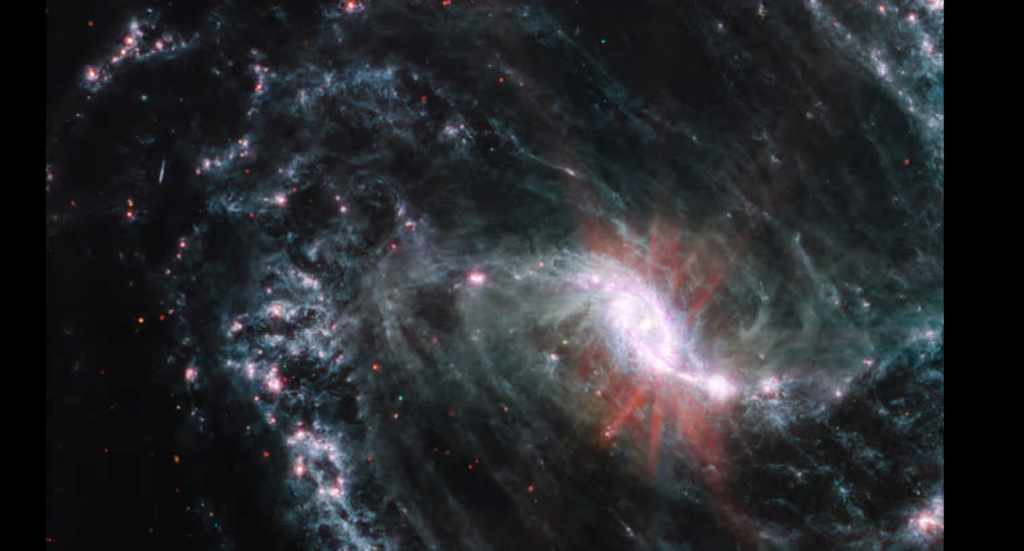The James-Webb Telescope makes us dream with these images that dissect nearby spiral galaxies

Never had astronomers seen them like this. The sharp infrared eye of the James-Webb space telescope had to be pointed at them, for these nearby galaxies to finally reveal their secrets. Leaving the !researchers "stunned"
It hasn't even been a year since the James-Webb Space Telescope (JWST) returned its first scientific images. Breathtaking images. Of exceptional quality. It is precisely this "astounding" quality that the High Angular Resolution Physics in Nearby Galaxies (Phangs) collaboration team , a team of over a hundredastronomers, has been exploiting for a few months to better understand how some of the processes that take place on a small scale in our Universe - the beginnings of the formation ofstars, for example -- have an impact on the evolution of the largest objects in ourcosmos-- the galaxies. !They have just published no less than 21 articles on this subject
As part of their project, the researchers are working on 19 spiral galaxies , 5 of which have already been the target of the instrumentMiri of the JWST -- the observation instrument in theinfraredmeans on board the space telescope:M74,NGC 7496, IC 5332, NGC 1365 and NGC 1433. “We see directly how theenergyof the formation of young stars affects thegasthat surrounds them, and it is simply remarkable” , comments Erik Rosolowsky, researcher at the University of Alberta (Canada), in a press release from NASA .

here, the barred spiral galaxy ngc 1433 with its particularly bright core surrounded by rings forming double stars. for the first time, in infrared images from the james webb space telescope, scientists can see cavernous gas bubbles where forming stars have released energy.
What astronomers have seen at the heart of these galaxies are highly structured features. Characteristics that the Hubble Space Telescope had never revealed, but which appear on the images of theJames Webb Space Telescope. Glowing cavities of dust and huge cavernous gas bubbles that line the spiral arms of galaxies. In some regions, this network of features appears to be constructed from both individual and superimposed shells and bubbles where young stars release energy.

this is ngc 7496 whose spiral arms are filled with cavernous bubbles and overlapping shells. these filaments and hollow cavities are evidence that young stars are releasing energy and, in some cases, expelling gas and dust from the interstellar medium around them.
The effects of star formation
Until then, researchers had always come up against the same difficulty. The early stages of a star's life cycle remained out of sight because the process is shrouded incloudsgas and dust. But, thanks to the powerful infrared capabilities of the JWST, they can now study how dust in the interstellar medium absorbs thelightforming stars and sends it back into the infrared, illuminating a complex network of gas and dust.
THEwavelengthsspecific to which Miri and thenear infrared cameraof the James-Webb space telescope, for example, provide access toemissionsofaromatic hydrocarbonspolycyclic. Of themoleculeswhich play an essential role in the formation of stars and planets. And it could help understand the evolution of galaxies over time.
" Thanks to theresolutionfrom the JWST, we can, for the first time, perform a comprehensive census of star formation and build inventories of interstellar bubble structures in galaxies near but beyond the Local Group, says NOIRLab astronomer Janice Lee ( UNITED STATES). This inventory will help us understand how star formation and its reactions impact the interstellar medium. To then give birth to another generation of stars. Or on the contrary, prevent the next generation of stars from forming”.
Source : sites internet

